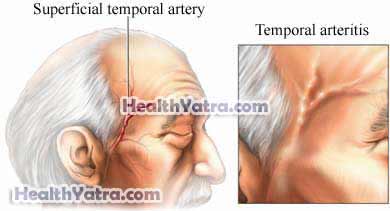Definition
Polymyalgia rheumatica (PMR) is an inflammatory disorder. It results in muscle pain and stiffness in the body. The effects are most common in the shoulders, arms, hips, and thighs. About 15% of people with PMR will also develop giant cell arteritis (GCA). GCA is an inflammation of the lining of the arteries, the blood vessels that carry blood away from the heart.
Causes
The exact cause is not known. Inflammatory conditions tend to be due to some kind of problem with the immune system. Some evidence suggests that certain viruses could be responsible for PMR. Genetic factors may also play a role.
Risk Factors
Factors that may increase the risk for PMR:
- Age: 65 and older
- Sex: female
- Ethnicity: most common in Caucasians, particularly those from northern Europe
Symptoms
Symptoms often develop within a couple of days. They may include:
- Muscle pain and/or stiffness in the hip, shoulder, or neck areas
- Stiffness in the morning
- Fever
- Unexplained weight loss
- Anemia
- Fatigue
- Mood changes (especially depression)
- Decreased appetite
Diagnosis
Your doctor will ask about your symptoms and medical history. A physical exam will be done. There is no single test for PMR. To support the diagnosis and rule out other conditions, tests may include:
- Erythrocyte sedimentation rate (ESR)—a blood test that measures how quickly red blood cells fall to the bottom of a test tube. In the case of inflammation, levels of fibrinogen increase in the blood. Fibrinogen makes the red blood cells clump. This makes them fall faster.
- Rheumatoid factor (RF)—a blood test that looks for a specific antibody (RF) in the blood. A positive RF test suggests a condition other than PMR.
- Complete blood count—a blood test that measures the amount of different blood cells present in whole blood. People with PMR often have anemia. This will result in low counts of red blood cells. People with PMR may also have elevated levels of platelets.
- C-reactive protein—a protein produced in the liver. It increases when there is inflammation.
- Muscle biopsy —removal of a sample of muscle tissue for examination (done if GCA has developed)
- Imaging studies—may include ultrasound, CT scan, or MRI of the blood vessels to look for inflammation in the joints (may be noticed in shoulders and hips)
If you have PMR, your doctor may also consider the possibility of GCA. Evaluation for GCA includes:
- Physical exam, including vision test
- Biopsy of an affected blood vessel is necessary to confirm the diagnosis
Treatment
Symptoms of PMR will disappear without treatment within several months to years. But, treatment leads to a dramatic improvement. It can occur within 24-48 hours. Treatment usually consists of:
- Corticosteroid medicine
- Anti-inflammatory drugs
Your doctor may also recommend that you take supplements, like calcium andvitamin D. Treatment may also include physical therapy to help improve flexibility, strength, and mobility.
Prevention
There are no known steps to prevent PMR.

